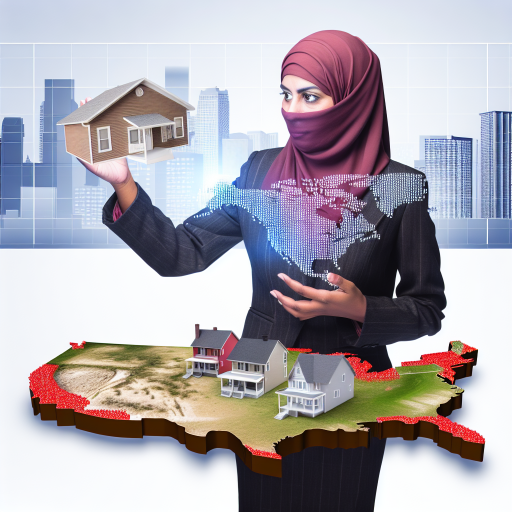Introduction to Urbanization
Definition of Urbanization
Urbanization refers to the increasing number of people living in cities.
It reflects the shift from rural to urban living.
This phenomenon occurs as populations migrate to urban areas.
Consequently, urban areas expand in both size and density.
Historical Context of Urbanization
The history of urbanization dates back thousands of years.
Early civilizations formed cities for trade, governance, and culture.
Over time, industrialization further accelerated urban growth.
This period brought significant economic changes and job opportunities.
As a result, cities became magnets for rural populations.
Factors Driving Urbanization
Multiple factors contribute to urbanization today.
Economic opportunities often attract individuals to cities.
Moreover, urban centers typically offer better access to services.
Education, healthcare, and transportation options are often superior.
Additionally, advancements in technology and infrastructure facilitate this migration.
Global Urbanization Trends
Urbanization is a global trend observed worldwide.
Transform Your Real Estate Decisions
Unlock personalized real estate insights crafted just for you. Get actionable advice designed to amplify your success.
Get StartedCountries such as India and China experience rapid urban growth.
Many urban areas struggle to accommodate this influx of residents.
Consequently, urban planning becomes crucial for sustainable development.
Understanding these trends aids in addressing housing and infrastructure needs.
The Impact of Urbanization on Population Growth and Demographics
Urban Migration Trends
Urbanization significantly influences population growth patterns.
Many people move from rural areas to cities in search of better opportunities.
This trend creates a diverse demographic landscape.
As a result, cities experience rapid population increases.
Urban areas become cultural melting pots of different backgrounds.
Changing Demographics
Urbanization alters demographic profiles in numerous ways.
For instance, younger populations predominantly inhabit cities.
These younger individuals typically seek employment and education.
Cities also attract skilled labor from various sectors.
Simultaneously, aging populations might reside in suburban areas.
Showcase Your Real Estate Business
Publish your company profile on our blog for just $200. Gain instant exposure and connect with a dedicated audience of real estate professionals and enthusiasts.
Publish Your ProfileImpact on Housing Demand
As urban populations surge, housing demand rises sharply.
Urban residents often seek affordable housing options within cities.
Consequently, this demand drives real estate prices upward.
High-rise apartments and affordable housing projects thrive in urban settings.
Urban Planning Challenges
Urbanization presents several planning challenges for city officials.
They must address the needs for infrastructure and public services.
Transportation systems need improvement to accommodate growth.
Moreover, access to healthcare and education remains critical.
Neglecting these aspects can lead to urban sprawl and overcrowding.
Future Directions for Urban Growth
Understanding the impact of urbanization is crucial for future planning.
As cities continue to expand, approaches to sustainable development are essential.
Anticipating future trends will help mitigate the challenges posed by growth.
Engaging communities in the planning process can lead to better outcomes.
Greater collaboration among stakeholders will enhance urban resilience.
How Urbanization Influences Housing Demand and Real Estate Prices
Impact of Population Growth
Urbanization leads to increased population density in cities.
This growth creates higher demand for housing options.
Consequently, available real estate becomes more valuable.
As populations rise, developers build more housing.
This can initially lead to overcrowding in urban areas.
Changing Demographics and Preferences
Urbanization brings diverse populations together.
These groups often have different housing needs and preferences.
Families may seek larger homes, while singles prefer smaller apartments.
Moreover, younger generations value urban living and convenience.
This evolution in demographics shapes real estate offerings.
Economic Growth and Job Opportunities
Urban centers usually offer better job prospects.
As more jobs appear, people migrate towards these cities.
This trend boosts both rental and purchase housing markets.
In turn, employment growth influences real estate prices positively.
Investors notice these trends and initiate developments accordingly.
Infrastructure Development
Urbanization normally accompanies improved infrastructure.
Showcase Your Real Estate Business
Publish your company profile on our blog for just $200. Gain instant exposure and connect with a dedicated audience of real estate professionals and enthusiasts.
Publish Your ProfileBetter public transportation attracts people to certain areas.
This growth in infrastructure can elevate property values.
Improved roads and public services make locations desirable.
As a result, real estate demand intensifies.
Challenges and Opportunities
Urbanization presents challenges like housing shortages.
However, it also provides opportunities for new developments.
Smart planning can alleviate pressure on existing housing stocks.
Urban renewal projects enhance neighborhood appeal.
Ultimately, urbanization continually reshapes real estate dynamics.
Uncover the Details: The Impact of Remote Work on Residential and Commercial Properties
The Role of Infrastructure Development in Urban Real Estate Markets
Impact of Transportation Infrastructure
Transportation infrastructure significantly influences real estate demand in urban areas.
Efficient public transit systems attract more residents and businesses.
As a result, property values in locations near transit hubs often increase.
Moreover, improved road networks enhance accessibility to suburbs.
This development encourages urban sprawl and expands housing options.
Utility and Service Availability
Availability of essential utilities impacts the attractiveness of real estate.
Access to clean water and sanitation is a critical factor for potential buyers.
Additionally, reliable electricity and internet services enhance property value.
Developers often prioritize projects in areas with established utility infrastructure.
This focus ensures buildings meet modern living standards and attract buyers.
Environmental Considerations
Infrastructure development also addresses environmental sustainability in urban planning.
Green spaces and parks are essential for community well-being.
Furthermore, eco-friendly transportation options reduce the carbon footprint.
Sustainable practices can increase property desirability among eco-conscious buyers.
Ultimately, communities with balanced infrastructure will thrive in the long run.
Economic Factors and Market Dynamics
Infrastructure development stimulates economic growth in urban areas.
As businesses relocate to well-connected zones, job opportunities increase.
An upsurge in employment drives population growth and housing demand.
Consequently, municipalities invest in infrastructure to attract new residents.
This creates a cycle of development, growth, and increased real estate value.
Showcase Your Real Estate Business
Publish your company profile on our blog for just $200. Gain instant exposure and connect with a dedicated audience of real estate professionals and enthusiasts.
Publish Your ProfileYou Might Also Like: The Role of Interest Rates in Shaping the Housing Market Landscape
Urbanization and the Shift Towards Sustainable Real Estate Practices
The Impact of Urbanization
Urbanization influences real estate demand significantly.
As more people move to cities, housing needs increase.
This movement creates opportunities in urban real estate markets.
Challenges in Urban Areas
Urban living can lead to environmental challenges.
These challenges include increased pollution and resource depletion.
Additionally, urban areas often face congestion and infrastructure stress.
Shifting to Sustainable Practices
In response to urban challenges, sustainable practices are emerging.
Developers increasingly focus on eco-friendly construction methods.
This includes using renewable materials and energy-efficient designs.
The Role of Technology
Technology plays a critical role in promoting sustainability.
Smart city initiatives integrate technology into urban planning.
These initiatives enhance efficiency and reduce environmental footprints.
Government Policies and Incentives
Government policies stimulate sustainable real estate development.
Incentives for green building practices are on the rise.
These policies encourage developers to adopt sustainable measures.
The Future of Urban Real Estate
The future looks promising for sustainable urban real estate.
As urban populations grow, so does the demand for sustainable options.
Investors are likely to seek properties with eco-friendly features.
Thus, sustainability will shape the evolution of urban living.
Explore Further: Unpacking the Effects of Migration on Local Housing Market Prices

Gentrification: Effects of Urbanization on Community Dynamics and Property Values
Understanding Gentrification
Gentrification occurs when affluent individuals move into lower-income neighborhoods.
This movement often leads to rising property values and rents.
Consequently, long-time residents may face displacement.
Ultimately, gentrification reshapes community dynamics significantly.
Impact on Property Values
The influx of wealthier residents increases demand for housing.
Higher demand drives up property prices across neighborhoods.
Moreover, renovated homes attract new buyers and investors.
This trend significantly boosts local real estate markets.
Community Dynamics Transformation
Gentrification alters the cultural fabric of neighborhoods.
Showcase Your Real Estate Business
Publish your company profile on our blog for just $200. Gain instant exposure and connect with a dedicated audience of real estate professionals and enthusiasts.
Publish Your ProfileAs new residents move in, existing businesses may change or close.
New establishments often cater to wealthier clientele.
As a result, traditional businesses may struggle to survive.
Social and Economic Challenges
Displacement poses substantial challenges for original residents.
Many communities lose their affordable housing options.
This loss contributes to social tensions among residents.
Furthermore, economic disparity increases within these neighborhoods.
Responses to Gentrification
Many local governments implement policies to address gentrification effects.
Affordable housing initiatives aim to maintain diversity.
Community land trusts also provide solutions for affordable living.
Such measures help stabilize neighborhoods amidst change.
Gain More Insights: How Remote Work is Changing Housing Market Preferences and Prices
Technological Innovations in Urban Areas and Their Impact on Real Estate Demand
Smart City Developments
Smart city initiatives harness technology to improve urban living.
These projects enhance infrastructure and connectivity in cities.
As a result, they attract businesses and investors seeking tech-oriented environments.
Urban areas that embrace smart solutions often see increased real estate interest.
Sustainable Building Practices
Innovative construction techniques lead to environmentally friendly buildings.
Sustainable architecture reduces energy consumption and operating costs.
These factors contribute to higher demand among eco-conscious buyers.
Furthermore, local governments incentivize green building through tax breaks and grants.
Digital Platforms and Real Estate Accessibility
Technology enhances the accessibility of real estate markets for buyers.
Online platforms provide a wealth of information on available properties.
Virtual tours and augmented reality tools facilitate remote property viewing.
This accessibility broadens the pool of potential buyers, driving demand.
Mobility Solutions and Urbanization
Advancements in public transportation systems influence real estate choices.
Efficient transit options connect people to employment centers.
In turn, neighborhoods with robust transit access experience increased property value.
Additionally, the rise of electric scooters and ridesharing apps enhances urban mobility.
The Rise of Remote Work
Technological advancements enable a growing remote workforce.
This shift allows individuals to prioritize lifestyle over proximity to work.
Showcase Your Real Estate Business
Publish your company profile on our blog for just $200. Gain instant exposure and connect with a dedicated audience of real estate professionals and enthusiasts.
Publish Your ProfileConsequently, demand for real estate in suburban and rural areas is rising.
Real estate developers now focus on creating adaptable living spaces for remote workers.
Future Trends: Predictions for Urbanization and Real Estate Development
Shifts in Population Dynamics
Urban areas will continue to draw people from rural settings.
This trend will accelerate as employment opportunities expand.
Additionally, younger generations favor urban lifestyles.
Suburbanization may continue in response to urban congestion.
People seek balance between urban amenities and suburban tranquility.
Technological Advancements
Smart cities are emerging as a key development trend.
Technologies like IoT and AI will improve urban living conditions.
These innovations will enhance energy efficiency and transportation.
Real estate developers must adapt to integrate smart technology.
Sustainability Concerns
Environmental sustainability is becoming a priority in urban planning.
Developers will increasingly embrace eco-friendly practices.
Green buildings will attract buyers focused on sustainability.
Furthermore, urban spaces will prioritize green public areas.
Changing Residential Preferences
Demand for mixed-use developments is on the rise.
People prefer walkable neighborhoods that blend work and life.
Smaller homes and apartments are likely to gain popularity.
Affordability remains a significant factor in housing decisions.
Impact of Remote Work
The rise of remote work is influencing housing locations.
Workers are now less tethered to urban offices.
Many seek homes in less densely populated areas.
As a result, suburban and rural real estate markets may benefit.
Government Policies and Regulations
Government initiatives will shape real estate development strategies.
Increased zoning flexibility is essential for urban growth.
Policies promoting affordable housing will attract investors.
Regulatory changes may streamline the development process.
Additional Resources
Immigration and the American Industrial Revolution From 1880 to …




